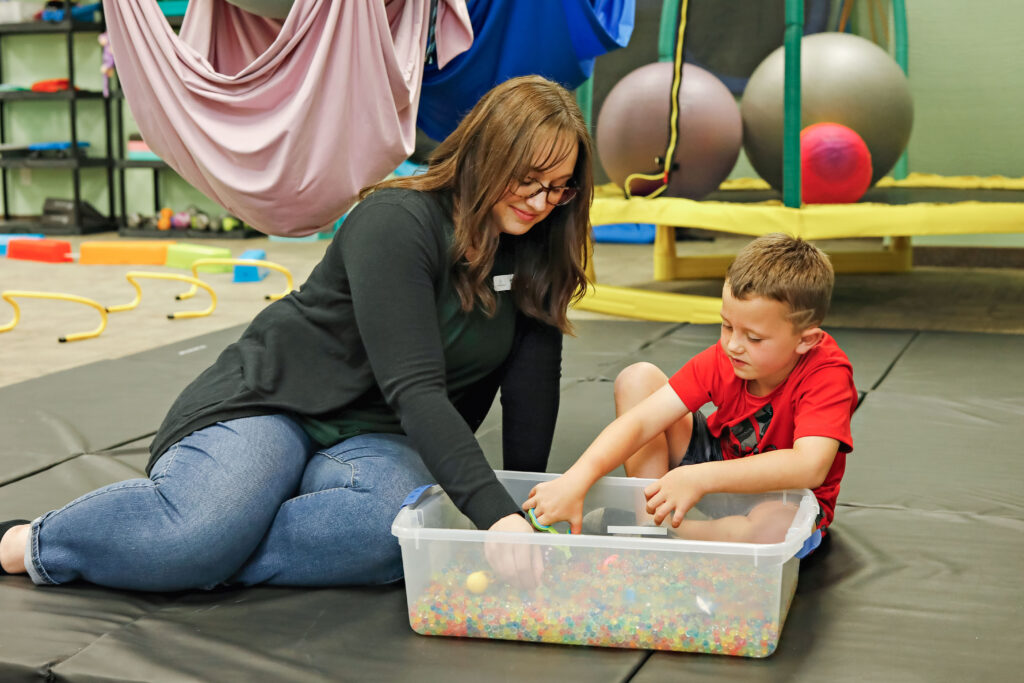
Understanding Occupational Therapy for Infants: A Guide for Parents and Caregivers
As parents and caregivers, we want the best for our children, especially during their early stages of development. It’s no surprise that when infants experience delays or difficulties in reaching developmental milestones, we might seek out expert guidance and support. One form of therapy that can be particularly helpful for infants is occupational therapy (OT).
But what exactly does occupational therapy for infants entail, and how can it support your child’s growth and development? Let’s take a closer look.
What is Occupational Therapy?
As we learned in our last blog post, occupational therapy is a healthcare profession that focuses on helping individuals develop the skills necessary for everyday activities, also known as “occupations.” For infants, these activities are foundational to their physical, cognitive, and emotional development.
Why Would an Infant Need Occupational Therapy?
Infants are constantly learning and developing their abilities to interact with the world around them. However, some infants might encounter challenges that hinder this process. These challenges could include:
- Developmental delays: Infants may have delays in motor skills, social-emotional development, or cognitive abilities.
- Prematurity: Babies born prematurely may have underdeveloped physical or sensory systems that require extra attention.
- Sensory processing issues: Some infants may be overly sensitive or less responsive to sensory input like touch, sound, or light, which can affect their ability to engage with their surroundings.
- Torticollis (neck tightness): Some infants have tight muscles on one side of the neck, affecting their ability to move or engage with their environment symmetrically.
- Feeding issues: Infants who have trouble breastfeeding or bottle-feeding, or who struggle with swallowing or chewing, can benefit from OT.
- Autism spectrum disorder (ASD): Early signs of ASD can sometimes manifest in difficulty with social interactions, sensory processing, and motor skills, all of which can be addressed through OT.
If a parent or caregiver notices delays in motor development, social skills, feeding, or sensory integration, an occupational therapist can conduct an assessment and create a plan to help the infant thrive.
What Does Occupational Therapy for Infants Involve?
Occupational therapy for infants is often gentle and play-based, with therapists working to engage babies in ways that are appropriate for their developmental stage. Here are some key components:
1. Sensory Integration Therapy
Many infants, especially those with sensory processing issues, benefit from sensory integration therapy. This type of therapy helps babies learn to respond to sensory stimuli (like textures, sounds, or movement) in a more balanced way. For example, an occupational therapist might gently encourage the infant to explore different textures or sounds to help them become more comfortable and engaged with their environment.
2. Motor Skill Development
OTs help babies build both fine motor skills (small muscle movements, such as grasping objects) and gross motor skills (large muscle movements, such as rolling over, sitting up, or crawling). This might include activities like reaching for toys, tummy time, and other exercises designed to strengthen muscles and promote coordination.
3. Development of Feeding Skills
Feeding is a key area where OT for infants can make a huge difference. Whether a baby is struggling to latch during breastfeeding, has trouble sucking or swallowing, or is having difficulties transitioning to solid foods, occupational therapy can help develop these crucial skills.
4. Positioning and Postural Support
Some babies need help developing strength in their core muscles to improve posture and alignment, which is essential for activities like sitting, crawling, and eventually walking. Occupational therapists can guide caregivers on the best ways to position their infant for optimal development.
5. Parent Education and Support
OT is not just about working directly with the infant—therapists also work closely with parents and caregivers to provide guidance and strategies for supporting the infant’s development at home. This could include tips on promoting motor skills, enhancing sensory experiences, and creating a nurturing environment that fosters growth.
How Can Parents Support Their Infant’s Occupational Therapy?
As a parent or caregiver, you play a crucial role in your infant’s therapy journey. Here are some ways you can support your baby’s progress:
- Follow through on exercises: Therapists often provide specific exercises or activities for you to do with your infant at home. Consistency is key to reinforcing progress.
- Create a stimulating environment: Engage your baby with a variety of sensory experiences, such as different textures, sounds, and visuals. Simple activities like tummy time, reading aloud, or playing with safe, colorful toys can enhance development.
- Be patient and gentle: Infants develop at different rates, so it’s important to be patient and allow your baby to progress at their own pace. Celebrate small victories!
- Communicate with your therapist: Share any concerns or observations with your therapist so they can adjust the therapy plan to suit your child’s unique needs.
All in All ….
Occupational therapy for infants is a valuable tool that helps support the development of critical skills needed for everyday life. Whether your infant is struggling with motor skills, sensory processing, feeding, or other developmental concerns, an occupational therapist can provide the guidance and support necessary to promote growth and well-being.
If you’re concerned about your infant’s development or suspect that they may benefit from OT, don’t hesitate to reach out to us at Little Legends to schedule an Evaluation! Early intervention can make a world of difference in helping your child reach their full potential.





No comment yet, add your voice below!